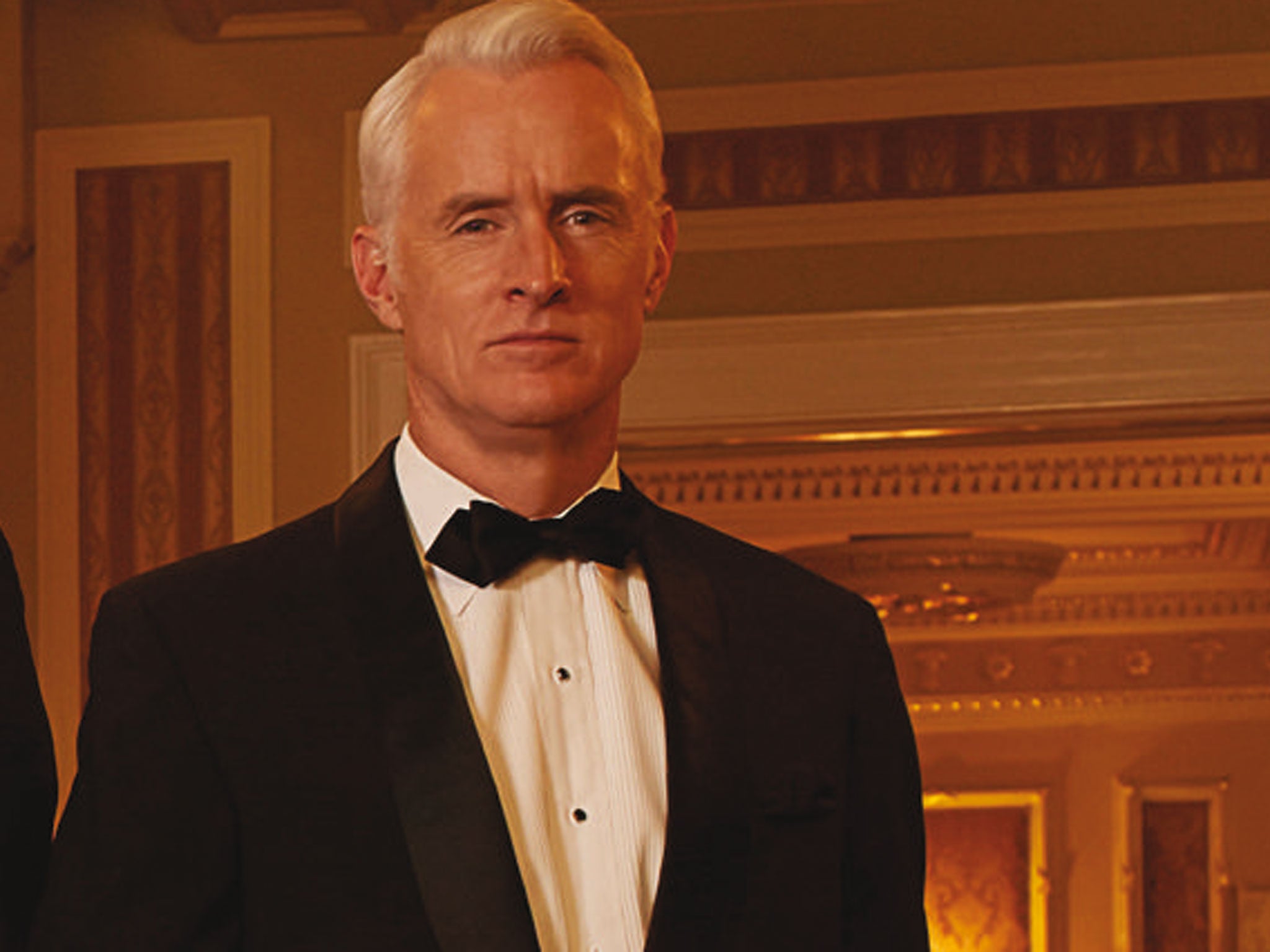TV review: Mad Men - That's a hell of a routine you've got there, Roger

Your support helps us to tell the story
From reproductive rights to climate change to Big Tech, The Independent is on the ground when the story is developing. Whether it's investigating the financials of Elon Musk's pro-Trump PAC or producing our latest documentary, 'The A Word', which shines a light on the American women fighting for reproductive rights, we know how important it is to parse out the facts from the messaging.
At such a critical moment in US history, we need reporters on the ground. Your donation allows us to keep sending journalists to speak to both sides of the story.
The Independent is trusted by Americans across the entire political spectrum. And unlike many other quality news outlets, we choose not to lock Americans out of our reporting and analysis with paywalls. We believe quality journalism should be available to everyone, paid for by those who can afford it.
Your support makes all the difference.There can't be many men on television less self-aware than Don Draper. In this double bill to begin series six of Mad Men, the first scene proper showed Don sweltering on Waikiki beach reading Dante's Inferno. Even in paradise, the wretched Don is in hell – but of course not a ripple of irony disturbs his furrowed brow.
Mad Men does not allow its characters what you might call personal development. The only soul who began to face up to himself was Sal, the gay art director, who soon disappeared. Every other character broils in their personal inferno. One benefit is that the programme-makers are thereby licensed to flesh out the last detail of their characters particular psycho-dramas to the most rococo detail (in Wednesday's episode, after his mother's funeral, Roger Sterling, below, passed on to his daughter an odd heirloom, a bottle of water from the River Jordan – that's not a scene you'd have caught on The Hour). This suits a long-running series, and may even be an approximation of life itself – hands up who's reached their revelatory third act? The challenge for the dramatist, however, is to try to do more with these circular journeys than add a few scenic detours.
To judge by Don, I'm not sure Mad Men is succeeding. The ad agency is thriving, he has a beautiful young wife, yet in his quest for his true identity, we know by now that Don ignores those closest to him, and clutches at meagre scraps of meaning here and there. When late one night in his Hawaii hotel bar he bumps into a young soldier on leave from Vietnam to get married, the encounter will, yes, require of Jon Hamm his rheumy-eyed gaze of pain. And on it goes: Don looks out of his office window mournfully or appears lost when a photographer exhorts him to "be yourself".
He also devises a print campaign for the Hawaiian hotel that looks more like a sketch of a suicide: a suit and shoes cast aside on an empty beach. What, you wonder, distinguishes these scenes from a couple of dozen over the previous 70-odd episodes? Little, perhaps, apart from the ever more cacophonous intimations of mortality. (It was the Don and Roger Show, largely: Betty got a look-in, but Pete, Peggy and Joan were shunted into the wings.)
Roger is similarly preoccupied. His mother dies and his favourite shoeshine boy dies, and he's unsure which matters to him more. He may be seeing a shrink, but Roger is always two lines ahead of him: "I'm just acknowledging that life, unlike this analysis, will eventually end, and someone else will get the bill."
It's not Roger's zingers that prevent you from losing patience, though; it is, for instance, the care that's gone into the nature of the opportunity his son-in-law wants him to invest in: a fruit refrigeration business, which preserves the flesh on its long journey across America. The world of Sterling Cooper Draper Pryce and its employees may be familiar, but it's well enough appointed to keep giving them your business.
The blonde bob, the lisp, the head-girl poise. Lucy Worsley, the chief curator of Historic Royal Palaces, is a broadcasting blue-blood. Rightly, the BBC agrees. But her latest series, Fit to Rule: How Royal Illness Changed History (BBC2, Monday ***), only fleetingly fulfilled its brief in its first outing last week. It appears to be, in fact, a straightforward narrative history of the personalities of the British monarchs. Worsley waved piss-pots and diaries before various academics, but it was only when she presented us with Charles I's orthopaedic boots, designed to ensure his legs didn't fail him during important ceremonies, that we glimpsed the all too frail figure that was often required to bear the crown.
Join our commenting forum
Join thought-provoking conversations, follow other Independent readers and see their replies
Comments